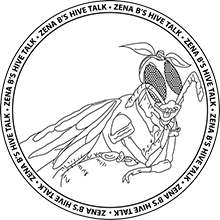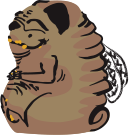Hive Talk - April 2021
Hive Talk - April 2021

Hive Talk - April 2021
So far Spring has been interesting to say the least. One day it’s sunny and beautiful and the next there is a snow drift across the driveway so deep we have to break our shovels out of hiding so that we can back out of the garage.. However, as the end of April draws near it looks like smooth sailing into spring, fingers crossed.
As the middle of March rolls around some gardeners like to start their own flower seedlings. Here are a few flowers, suited to Zone 3b, to help our pollinators, especially honey bees!
Alyssum, Oregano, Anise Hyssop, Apple Trees, Nasturtium, Asters, Pansy,Peony, Phlox, Poppies, Bachelor Buttons, Roses, Borage, Black-Eyed Susan, Sage, Blanket Flower, Salvia, Thyme, Calendula, Stone Crop, Sunflower, CatMint, Yarrow, Zinna, Clover, Cosmos, Chives, Echinacea, Fox Glove, Geranium, Golden Rod, Lupin, Marigold, and Bee Balm ….to mention a few.
Back at the hive the girls have been staying close to the colony due to the cool weather and the fact that they are the new generation of ‘summer bees’. Back at the end of February the Queen bee started laying her eggs. The older ‘winter’ bees have stayed in the hive for 6 months working to ensure the new ‘summer’ bees have been taken care of, fed, and kept warm. The ‘Summer’ bees have been practicing their flights increasing the distance from the hive. They also orientate their flight paths so that they know how to get home.
I was out the other day feeding the new honey bees pollen patties and their progress looks encouraging. The young bees look healthy, fuzzy, and strong. Zena and I were walking through the park today (April16th) and I could hear bees humming in one of the trees. Upon closer observation I saw that they were honey bees collecting pollen from the trees. I went back to the hive and saw that they were bringing in white and a light yellow pollen to be processed into ‘bee bread’ for the new brood. The foragers bring the pollen in on their legs (in their pollen baskets) to the entrance of the hive, then the worker bee meets them and removes the pollen from the forager, chews it and mixes it with her enzymes, and stores it in the honeycomb to be used to feed the baby bees.
I will be inspecting the colonies mid-May to check for diseases, and a weak queen. Medicated strips to control the levels of Varroa Mites were put into the hives on March 18th, and will be removed by May 12th. While the hives are open I’ll Bee looking for signs of a weak queen. Remember that the queen only mates during her maiden flight. She returns to her hive and lives out her life laying eggs not ever leaving her colony. For some reason, if her resources (eggs and sperm stores) are low she will not be able to continue producing strong numbers of brood. She may be injured during a hive inspection, and die, or she may be killed by her workers if her queen pheromones weaken. Another indication of a weak queen is a ‘shotgun’ pattern on the honeycombs where there are open spaces in the comb. There should be a continual cycle of brood at various stages in a nice tight pattern. At this point in the season the population increases to accommodate the July ‘honey flow’. If we don’t have the numbers going into the summer, the hive will not be able to produce enough honey for the beekeeper, and for the colony going into the winter.
Another thing to look for is that there is enough room for the queen to lay her brood. If the hive is too crowded, the bees will leave taking half the hive, with the queen, and they will “swarm”. A good topic to chat about next month.
In the meantime if you hear humming overhead, check it out. The honey bees are busy doing their thing. But, if the hum is very loud, and the bees are in a big clump, give me a call! 1-306-679-2207 (It shouldn’t happen as I will give them more than enough room to enjoy the comforts of their hive, but you never know. Fact: Swarming bees are very docile so don’t worry about getting stung. No really!)
